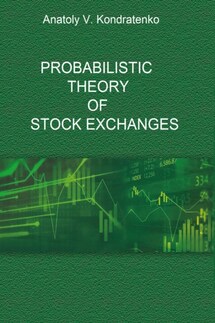Probabilistic Economic Theory - страница 26
So, according to our approach, equations of motion in classical economy are nominally identical to those in the corresponding mechanical system. However, their constants and potentials will have another essence, other dimensions and other values. A great advantage of classical economies consists of the fact that mathematical solutions of these equations, analytical or numerical, have been found for a great number of Lagrange functions with different potentials. That is why it is of great help to apply them. Allow us to turn to relatively simple classical economies.
Let us consider a case of the classical economy with a single good, a single buyer, and a single seller, where environmental influence and interaction between a buyer and a seller can be described with the help of potentials. The Lagrangian of such an economy has the following form:
In (4) m>1 and m>2 are certain unknown constant values or parameters of economic agents who are the buyer and the seller respectively. The first two members of equation (4) in classical mechanics correspond to kinetic energy, and the remaining three to potential energy. Understanding the conventional character of these notions, we will use them for economy as well. Potential V>12(p>1, p>2) describes interaction between the buyer and the seller (it is unknown a priori), and potentials U>1(p>1, t) and U>2(p>2, t) are designed to describe environmental influence on economy. They are to be chosen with respect to experimental data according to the dynamics of the modeled economy. Lagrange equations have the following form for this type of Lagrangian:
This system of two differential second-order equations of time t represents equations of motion for a selected classical economy. According to their form they are identical to the equations of motion of the physical prototype in physical space. In the latter system (5), the second Newton’s law of classical mechanics is designated: “product of mass by acceleration equals force”. And quite another matter is that potentials can be significantly different from the corresponding potentials in the physical system. We should mention once again that these potentials are to be discovered for different economies by detailed comparison of results of computation of equations of motion of economies with experimental or research data, or in other words, with data of empirical economics. At the initial stage it is natural to try to use known forms of potentials from physical theories, and we are going to do that in future. Let us note that the purchase-sale deal or transaction in the market between the buyer and the seller will take place at the time







